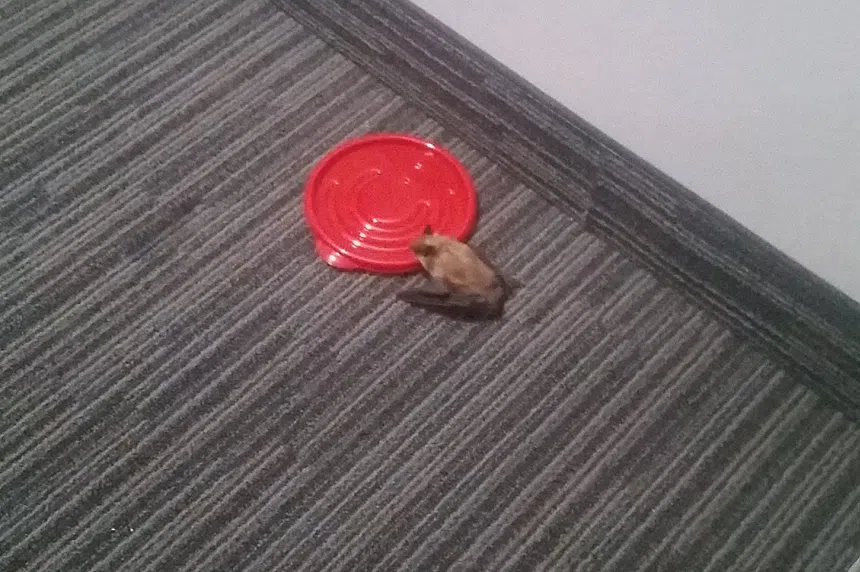It is currently peak bat season in Saskatchewan, and no, there isn’t a new Batman movie coming out.
If you’ve noticed more of the furry little creatures flying or hanging around at night, you certainly aren’t alone, but you probably won’t be seeing them for much longer. Bats go into hibernation in October for seven months, according to Melanie Elliott, a bat specialist and volunteer at Living Sky Wildlife Rehabilitation.
Elliott has been working with bats for more than 30 years, and has even been bitten by some of the thousands of bats she’s worked with.
A bite from a bat is no joke, she said. Bats can be carriers of the rabies virus, which can be fatal if contracted by humans without vaccine protection. But, Elliott said, even though it is possible, the risk of getting rabies is low.
“Rabies is pretty rare in Saskatchewan. It does show up and I do every year have a couple of bats that are rabid,” she said.
If you do get bit, Elliott said you need to seek immediate medical attention. The vaccine can be given after a bite, and it’s 100 per cent effective.
Elliott said now is the time of year when people could come into contact with a bat, because younger bats are just learning to fly, but haven’t sharpened their skills yet.
She said that means people could see the animals in spaces like homes, sheds, garages, or even hot tubs.
But the biggest thing to do when coming into contact with a bat is not panic, Elliott said. Bats are endangered species, she noted, and if they get into an unoccupied part of your home but aren’t bothering you, the best move is to avoid bothering them.
“If they don’t get into the living space of the humans, we encourage them to let them be. They’ll be hibernating by October, so they’ll quiet down,” she said.
Bats provide a lot of help to humans, Elliott noted. They eat insects such as grasshoppers, crickets, moths and, of course, mosquitoes.
“These animals all eat insects, so they’re very beneficial to the human ecosystem,” Elliott said.
It can be difficult, she added, but she encourages people to become a bat-friendly home until they leave. But if a bat does get into your living space, she said they are very easy to remove and someone from the rehabilitation hotline is able to walk you through the process.
“If they’re hanging by their little feet, you can just use leather gloves or put a towel around them and put them outside,” Elliott explained.
Bats can’t take off from the ground, she said, so you’ll have to put them up high, like on a tree trunk, and they’ll take off on their own when they’re ready.
But during the winter months, when they are supposed to be hibernating, the wildlife society will come and remove them and properly store them until spring.
Elliott said she developed a hibernation spot for bats in her own cold cellar, where she houses them and releases them in the spring.
“Most ladies have beets and jam in their cold cellars, but I have bats in individual Rubbermaid boxes, and we keep them separate locations so we’re not letting them transmit any germs to each other from different locations,” she said.
So how can you prevent a bat from using your home as a hotel for the winter months while they hibernate? Elliott said they like older houses with big trees, so newer buildings don’t have as many issues with bats.
“As the house ages, gaps happen between bricks, especially around chimneys, and houses that have dormers, often the roof isn’t sealed. So any gap that you can get your little finger in is a bat-friendly gap,” Elliott said.
If you ever come across a bat, or any other wildlife, Elliott said it’s important to never touch them with your bare hands.
If you encounter a bat in your home, Elliott said you can reach the wildlife hotline at 306-242-7177, you can take the bat to Living Sky Wildlife Rehabilitation at 100 Rayner Avenue in Sutherland (if you’ve safely put it into a cardboard box), or you can call them at 306-281-0554 for guidance.











